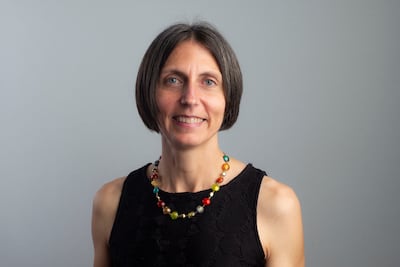One of the big surprises from this year’s census was the 10 per cent drop in number of people identifying as Roman Catholic. A surprise because it means 69 per cent of the population still identifies as Catholic. Where exactly can they be found? Certainly, they’re not at Mass every Sunday. Nor do they seem to have a great grasp of Church teaching.
An Irish Times/MRBI poll a decade ago found only a quarter of Irish Catholics believed in transubstantiation – the idea that the Eucharist is not a symbol but actually the body of Christ. Would you find a quarter today who could explain transubstantiation, let alone believe in it?
The number of people categorised as having “no religion” in Census 2022 stood at 14 per cent, up just four points on the 2016 figure, despite a change in the census questionnaire to make it easier for people to opt out of declaring a faith.
[ Family is the most important factor in having a belief in GodOpens in new window ]
“Frankly I was surprised it was only 14 per cent. I was surprised it wasn’t up equal with the North [17.4 per cent in the 2021 Northern Ireland census] or more,” says Gladys Ganiel, professor in the sociology of religion at Queen’s University Belfast.
READ MORE
The author of several books on religious belief in Ireland, Ganiel says censuses in many countries can produce figures that overestimate religiosity. “To some people, it’s a cultural identity, it’s a badge, it doesn’t have much meaning at all. You get that in the North as well as the South … Religious identification tells you something, but Mass attendance and church attendance tells you more.
“By most indicators, the North is more religious than the Republic right now, both in Protestantism and Catholicism. The church attendance figures are much higher. That does skew towards older people and people in rural areas, but it’s still a much more practising society.”

In this, she sees similarities between Catholics in Northern Ireland and Catholics in the United States. In both jurisdictions they have been minorities, which means they have had to “compete” to hold on to their flocks. The fact that neither was linked to state power also meant they were less damaged by church scandals. In Northern Ireland “you don’t pick up the same level of hostility” towards the church compared with in the Republic. “In the North, it’s more an apathy thing.”
Looking across both the Border and the Atlantic provides a couple of sharp lessons for the Catholic Church in the Republic. The first relates to education.
“In the Catholic Church in the US, there is not a big apparatus where most people who identify as Catholic go to a Catholic school. So at parish level in the US the Church has to work harder because it’s the parish that has to do the confirmations and the baptisms and so on. It’s not necessarily been funnelled through this whole state system which facilitates the ‘bouncy castle Catholics’, or whatever you want to call them,” says Ganiel, a member of the Royal Irish Academy who - fun fact! - is also an elite runner and won the 2022 Belfast City Marathon women’s race.
“In some sense the Catholic Church in the US has learned from the Protestant churches in that there is a real attempt to socialise young people through parish life … Really, if the Catholic Church is going to survive on the island of Ireland in a relatively robust form it needs to start doing it through the parish rather than relying on schools.”
Bishops have made soundings over the years about reform, but they keep retreating into “hold what we have” mode in the education system. It means schools under Catholic patronage – that’s 90 per cent of all Irish primary schools – still have taxpayers footing the bill for faith-formation classes that are timetabled into the school day.
Research in the US would indicate that attendance, say, at a Catholic school doesn’t have a massive effect on whether people grow up to practise their faith
The “divestment” model that has been trialled over the past decade has been a failure on its own terms, as highlighted by Social Democrats leader Holly Cairns in the Dáil last week. Community opposition is trotted out as a reason for inaction, but the bishops could solve this problem overnight – gain public goodwill and potentially strengthen their religious communities – by deciding all faith formation will be done in the parish rather than in the school. Primary schools could continue to have the Catholic plaque on the door and retain some sort of link to the parish – secularists respecting freedom of religion couldn’t reasonably object to that – and a major source of resentment of the Church among nonreligious would dissipate.
[ Will you go to a church over Easter? ‘No, eating chocolate eggs instead’Opens in new window ]
“In Ireland there seems to have been an assumption that religious socialisation is the job of the schools,” says Ganiel. “Research in the US would indicate that attendance, say, at a Catholic school doesn’t have a massive effect on whether people grow up to practise their faith. Rather, parents’ attendance coupled with discussion of faith/spiritual matters in the home is much more important. And this is often coupled with the more active role of parishes rather than schools in the US in sacramental preparation, etc.”
The other lesson for the Church is a more positive one. Ganiel points out that those with “no religion” are typically conflated with atheists, whereas many “nones” are still engaged with spiritual thought. She quotes a group of US sociologists who have observed how young adults retain a “back-pocket God”, despite abandoning organised religion. These young people treat faith like a smartphone app, something “readily accessible, easy to control, and useful – but only for limited purposes”.
“Organised religion has taken a big hit in Ireland and western Europe because institutions have been slow to change,” says Ganiel, “but people with a spiritual hunger, as it were, may look outside institutions for that to be fulfilled, or only dip in and out of that institution and find their own path.”
This might be seen within the church as substandard belief. On the flip side, it is a connection that could bring deeper engagement. Turning a “back-pocket” faith, or bouncy-castle Catholicism, into more meaningful religious conviction won’t be easy. But didn’t Jesus tell his followers to chase the lost sheep rather than just comfort the flock?
The absence of religious ties exacerbates the effects of being on the social and economic margins
For secularists, the census figures also offer scope for reflection – and not necessarily triumphalism.
Some studies internationally show that people who are highly educated tend to be less religious – the fact that Dún Laoghaire-Rathdown had the highest number of “nones” in the census at 24 per cent would seem to follow this trend. “In Northern Ireland, too, there is a similar pattern, in that 30 per cent in [very affluent, predominantly Protestant] Ards and North Down say they have no religion,” says Ganiel, but there are “complexities and nuances”.
One of these is highlighted by the US sociologist Nancy Ammerman, who found that people in lower socioeconomic groups “are – if they are also unaffiliated – more pessimistic, less trusting, less engaged in their communities and less empowered. They may even be less healthy. The absence of religious ties exacerbates the effects of being on the social and economic margins.”
Does Ganiel have a concern about people in lower socioeconomic groups here declaring “no religion”?
“I am not sure I would go so far as to equate ‘no religion’ with alienation from mainstream society among lower socioeconomic classes, as we would need more data about whether these people are engaged with other civic institutions or social networks. But at the very least, they are unlikely to access the potential supports they might receive through religious engagement.”
While “Ireland actually has done better in maintaining social capital through volunteerism than some other countries”, she says, “it is the most marginalised people in lower socioeconomic groups and immigrants/refugees who have the most to lose with the waning of civic institutions, including churches”.















